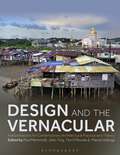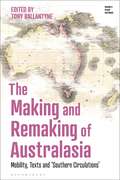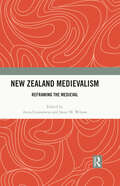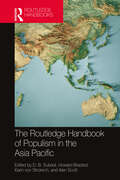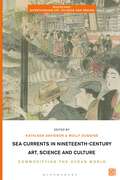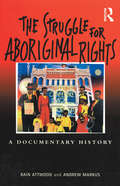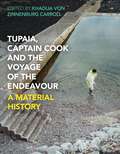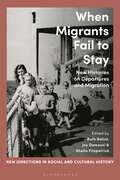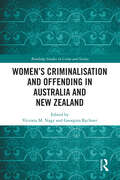- Table View
- List View
Design and the Vernacular: Interpretations for Contemporary Architectural Practice and Theory
Design and the Vernacular explores the intersection between vernacular architecture, local cultures, and modernity and globalization, focussing on the vast and diverse global region of Australasia and Oceania. The relevance and role of vernacular architecture in contemporary urban planning and architectural design are examined in the context of rapid political, economic, technological, social and environmental changes, including globalization, exchanges of people, finance, material culture, and digital technologies. Sixteen chapters by architects designers and theorists, including Indigenous writers, explore key questions about the agency of vernacular architecture in shaping contemporary building and design practice. These questions include: How have Indigenous and First Nations building traditions shaped modern building practices? What can the study of vernacular architecture contribute to debates about sustainable development? And how has vernacular architecture been used to argue for postcolonial modernisation and nation-building and what has been the effect on heritage and conservation? Such questions provide valuable case studies and lessons for architecture in other global regions -- and challenge assumptions about vernacular architecture being anachronistic and static, instead demonstrating how it can shape contemporary architecture, nation building and cultural identities.
The Making and Remaking of Australasia: Mobility, Texts and ‘Southern Circulations’ (Empire’s Other Histories)
This book explores the emergence of 'Australasia' as a way of thinking about the culture and geography of this region. Although it is frequently understood to apply only to Australia and New Zealand, the concept has a longer and more complicated history. 'Australasia' emerged in the mid-18th century in both French and British writing as European empires extended their reach into Asia and the Pacific, and initially held strong links to the Asian continent. The book shows that interpretations and understandings of 'Australasia' shifted away from Asia in light of British imperial interests in the 19th century, and the concept was adapted by varying political agendas and cultural visions in order to reach into the Pacific or towards Antarctica. The Making and Remaking of Australasia offers a number of rich case studies which highlight how the idea itself was adapted and moulded by people and texts both in the southern hemisphere and the imperial metropole where a range of competing actors articulated divergent visions of this part of the British Empire. An important contribution to the cultural history of the British Empire, Australia, New Zealand and Pacific Studies, this collection shows how 'Australasia' has had multiple, often contrasting, meanings.
New Zealand Medievalism: Reframing the Medieval
This volume maps the phenomenon of medievalism in Aotearoa, initially as an import by the early white settler society, and as a form of nation building that would reinforce Britishness and ancestral belonging. This colonial narrative underpins the volume’s focus on the imperial relationship in chapters on the academic study of the Middle Ages, on medievalism in film and music, in manuscript and book collections, and colonial stained glass and architecture. Through the alternative 21st-century frameworks of a global Middle Ages and Aotearoa’s bicultural nationalism, the volume also introduces Maori understandings of the ancestral past that parallel the European epoch and, at the opposite end of the spectrum, the phenomenon of global right-wing medievalism, as evidenced in the Alt-right extremism underpinning the Christchurch mosque attack of 2019.The 11 chapters trace the transcultural moves and networks that comprise the shift from the 20th-century study of the Middle Ages as an historical period to manifestations of medievalism as the reception and interpretation of the medieval past in postmedieval times. Collectively these are viewed as indications of the changing public perception about the meaning and practice of the European heritage from the colonial to contemporary era.The volume will appeal to educationists, scholars, and students interested in the academic history of the Middle Ages in New Zealand; enthusiasts of film, music, and performance of the medieval; members of the public interested in Aotearoa’s history and popular culture; and all who enjoy the colourful reinventions of medievalism.
The Routledge Handbook of Populism in the Asia Pacific (Indo-Pacific in Context)
This handbook brings national and thematic case studies together to examine a variety of populist politics from local and comparative perspectives in the Asia Pacific. The chapters consider key and cross cutting themes such as populism and nationalism, religion, ethnicity and gender, as well as authoritarianism. They show how populist politics alters the way governments mediate state-society relations. The essays in this volume consider: • diverse approaches in populist politics, for example, post-colonial, strategic vs ideational, growth and redistribution, leadership styles, and in what ways they are similar to, or different from, populist discourses in Europe and the United States; • under what social, political, economic and structural conditions populist politics has emerged in the Asia-Pacific region; • national case studies drawn from South, East and Southeast Asia as well as the Pacific analyzing themes such as media, religion, gender, medical populism, corruption and cronyism, and inclusive vs exclusive forms of populist politics; • modes and techniques of social and political mobilization that populist politicians employ to influence people and their impact on the way democracy is conceived and practiced in the Asia Pacific. As a systematic account of populist ideologies, strategies, leaders and trends in the Asia Pacific, this handbook is essential reading for scholars of area studies, especially in the Asia Pacific, politics and international relations, and political and social theory.
Sea Currents in Nineteenth-Century Art, Science and Culture: Commodifying the Ocean World (Biotechne: Interthinking Art, Science and Design)
How did scientists, artists, designers, manufacturers and amateur enthusiasts experience and value the sea and its products? Examining the commoditization of the ocean world during the nineteenth century, this book demonstrates how the transaction of oceanic objects inspired a multifaceted material discourse stemming from scientific exploration, colonial expansion, industrialization, and the rise of middle-class leisure. From the seashore to the seabed, marine organisms and environments, made tangible through processing and representational technologies, captivated practitioners and audiences. Combining essays and case studies by scholars, curators, and scientists, Sea Currents investigates the collecting and display, illustration and ornamentation, and trade and consumption of marine flora and fauna, analysing their material, aesthetic and commercial dimensions. Traversing global art history, the history of science, empire studies, anthropology, ecocriticism and material culture, this book surveys the currency of marine matter embedded in the economies and ecologies of a modernizing ocean world.
The Struggle for Aboriginal Rights: A documentary history
The Struggle for Aboriginal Rights is the first book of its kind. Not only does it tell the history of the political struggle for Aboriginal rights in all parts of Australia; it does so almost entirely through a selection of historical documents created by the Aboriginal campaigners themselves, many of which have never been published. It presents Aboriginal perspectives of their dispossession and their long and continuing fight to overcome this. In charting the story of Aboriginal political activity from its beginnings on Flinders Island in the 1830s to the fight over native title today, this book aims to help Australians better understand both the continuities and the changes in Aboriginal politics over the last 150 years: in the leadership of the Aboriginal political struggle, the objectives of these campaigners for rights for Aborigines, their aspirations, the sources of their programmes for change, their methods of protest, and the outcomes of their protest. Through the words of Aboriginal activists, across 150 years, The Struggle for Aboriginal Rights charts the relationship between political involvement and Aboriginal identity.
Tupaia, Captain Cook and the Voyage of the Endeavour: A Material History
Centring priest and navigator Tupaia and Pacific worldviews, this richly illustrated volume weaves a new set of cultural histories in the Pacific, between local islanders and the crew of the Endeavour on James Cook's first 'voyage of discovery' (1768-1771). Contributors consider material collections brought back from the voyage, paying particular attention to Tupaia's drawings, maps, cloth and clothes, and the attending narratives that framed Britain's engagement with Pacific peoples. Bringing together indigenous and Pacific-based artists, scholars, historians, theorists and tailors, this book presents a cross-cultural conversation around the concepts of acquired and curated artefacts that traversed oceans and entwined cultures. Each chapter draws attention to a particular material, object or process to reveal fresh insights on the voyage, the societies it brought together and the histories it transformed. Authors also explore animal iconography, instruments and ethnomusicology, and performances and rituals. This work challenges colonial museum collections and celebrations of Cook's voyages, using materials old and new to make connections between past and present, whilst reinforcing Tupaia's agency as both a historical figure and a contemporary muse. Tracing overlapping folds of symbolism, this book draws together a picture of the diverse materials and people at the centre of cultural exchange.
When Migrants Fail to Stay: New Histories on Departures and Migration (New Directions in Social and Cultural History)
The aftermath of the Second World War marked a radical new moment in the history of migration. For the millions of refugees stranded in Europe, China and Africa, it offered the possibility of mobility to the 'new world' of the West; for countries like Australia that accepted them, it marked the beginning of a radical reimagining of its identity as an immigrant nation. For the next few decades, Australia was transformed by waves of migrants and refugees. However, two of the five million who came between 1947 and 1985 later left. When Migrants Fail to Stay examines why this happened. This innovative collection of essays explores a distinctive form of departure, and its importance in shaping and defining the reordering of societies after World War II. Esteemed historians Ruth Balint, Joy Damousi, and Sheila Fitzpatrick lead a cast of emerging and established scholars to probe this overlooked phenomenon. In doing so, this book enhances our understanding of the migration and its history.
Women’s Criminalisation and Offending in Australia and New Zealand (Routledge Studies in Crime and Society)
Women’s Criminalisation and Offending in Australia and New Zealand offers new research and analysis of women’s offending and criminalisation in Australia and New Zealand from British settlement through to the late twentieth/early twenty-first centuries. Drawing attention to women as offenders as understood in a multitude of ways, this collection highlights how women have been involved with crime and criminal behaviour, their treatment inside and outside of courts and prisons, and how women’s deviation from societal norms have attracted negative attention throughout the decades. For Aboriginal and Māori women especially, the responses were harsher than what they could be for non-indigenous women. The chapters cover a broad range of transgressions that women have been actively involved with, including theft, drug and alcohol abuse and offences, organised crime, and homicide, as well as how women’s behaviour and their bodies have been criminalised and responded to by authorities. What this collection demonstrates is that women have often chosen to be involved with crime and criminality, while on other occasions their behaviour, innocent as it was, was not considered acceptable by contemporaries, resulting in confusion and misapprehension of women who refused to fit a mould. Women’s Criminalisation and Offending in Australia and New Zealand brings together historical and criminological methods, theories, and scholars to shed light on how Australia and New Zealand’s colonial, later state, and national governments have sought to understand, control, and punish women. This collection will be of interest and value to scholars, students, and everyone with an interest in criminology, history, law, sociology, Indigenous studies, and Australian and New Zealand studies.
